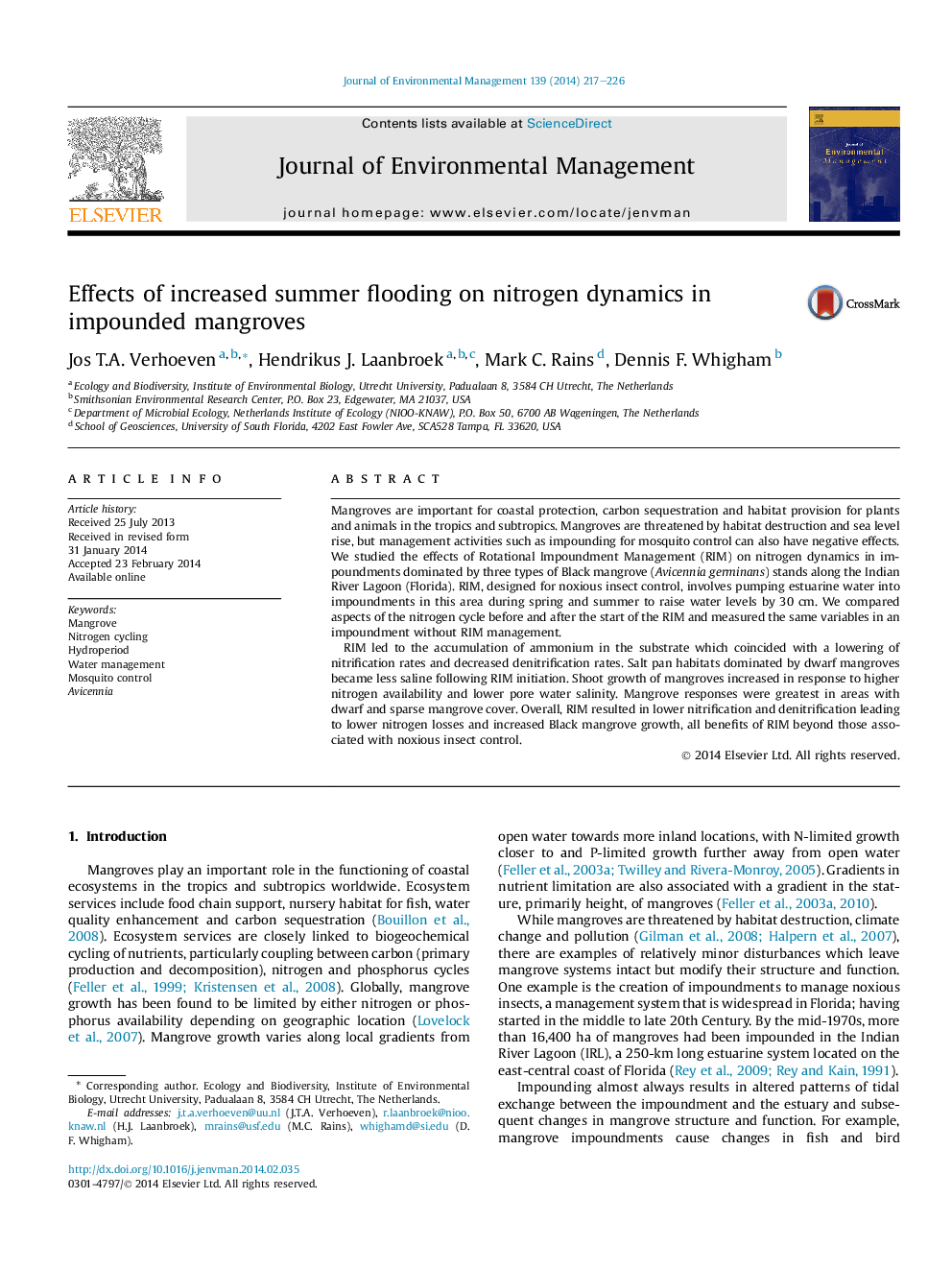| Article ID | Journal | Published Year | Pages | File Type |
|---|---|---|---|---|
| 7483969 | Journal of Environmental Management | 2014 | 10 Pages |
Abstract
RIM led to the accumulation of ammonium in the substrate which coincided with a lowering of nitrification rates and decreased denitrification rates. Salt pan habitats dominated by dwarf mangroves became less saline following RIM initiation. Shoot growth of mangroves increased in response to higher nitrogen availability and lower pore water salinity. Mangrove responses were greatest in areas with dwarf and sparse mangrove cover. Overall, RIM resulted in lower nitrification and denitrification leading to lower nitrogen losses and increased Black mangrove growth, all benefits of RIM beyond those associated with noxious insect control.
Related Topics
Physical Sciences and Engineering
Energy
Renewable Energy, Sustainability and the Environment
Authors
Jos T.A. Verhoeven, Hendrikus J. Laanbroek, Mark C. Rains, Dennis F. Whigham,
